I'M ONE TO TALK
Our Blog Posts will help you reach your full potential in becoming a confident conversationalist. New topics each week.
Sports Conversation Starters for Your Workweek
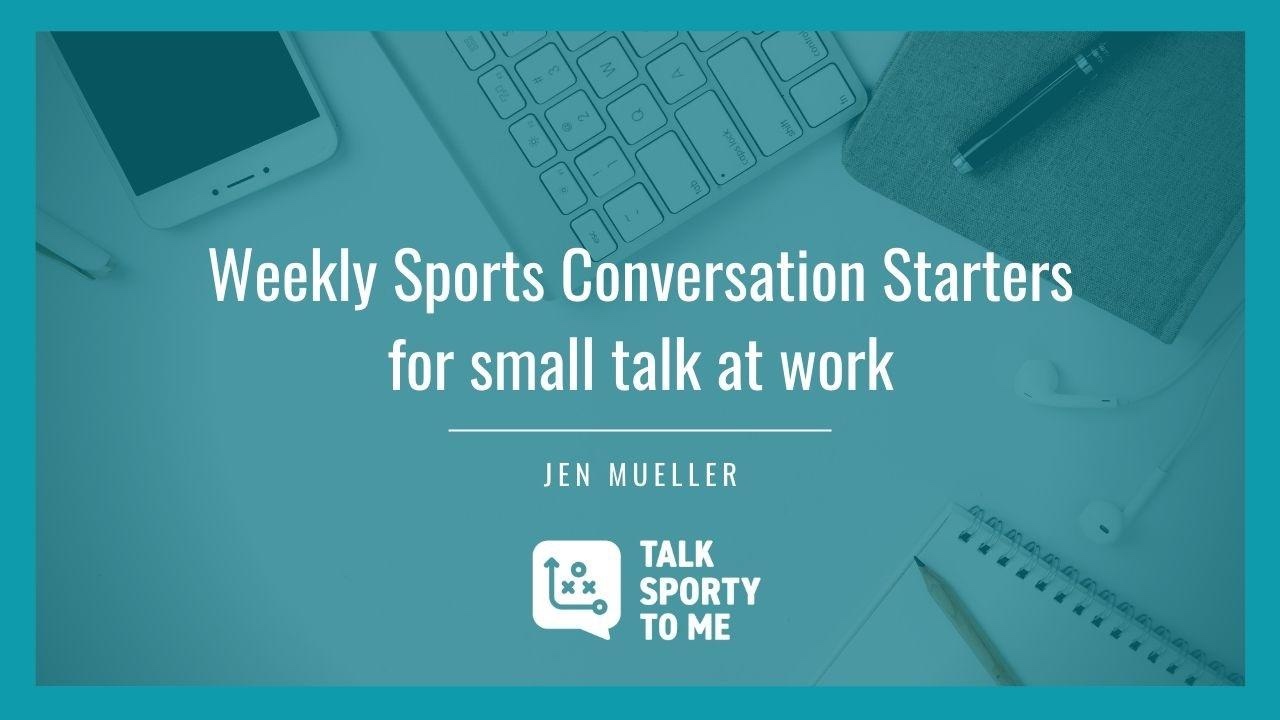
After a week spent visiting family in warm, sunny weather I returned to Seattle… and to rain and 40-degree temperatures. It’s like that a lot here. Ask me about the weather and I’ll probably tell you it’s raining. The weather is not a great conversation starter. It rarely goes anywhere interesting it often results in a one- or two-word answer. For people who have spent most of the last year inside the weather sometimes isn’t even relevant.
For small talk that leads to productive conversations and better follow up opportunities try sports and these sports conversation starters.

Sports Conversation Starters for Your Workweek
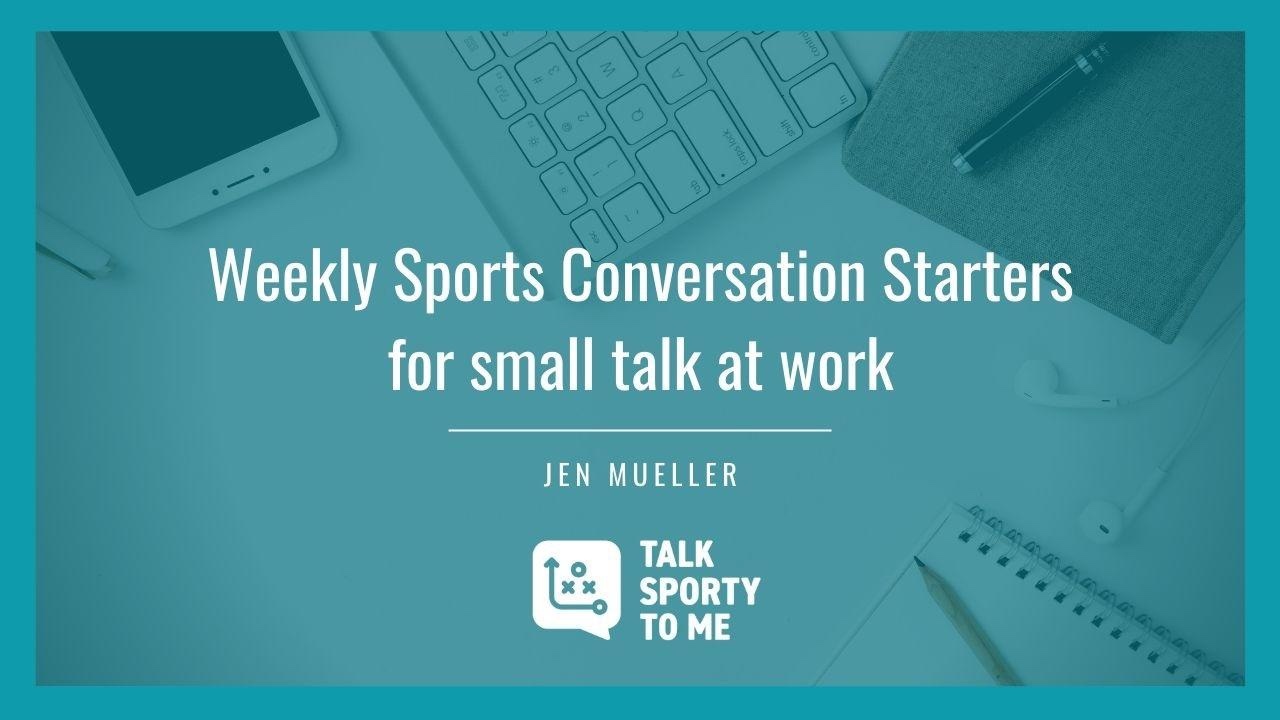
Small talk without intentionally is a waste of time.
Which is why I prepare for the 60-second conversations that occur prior to my Spring Training interviews. I’m not just trying to kill time before the camera starts rolling. I’m not filling the silence or just trying to be polite. I have an objective in mind and a question to help guide the conversation.
Intentional preparation makes all the difference between awkward small talk and a productive conversation.
As you think through your conversations this week here are sports topics that could be used to start a conversation.

Sports Conversation Starters for Your Workweek

Seemingly small interactions can make a bigger impact than is evident in that moment.
A former Seahawk reminded me of that in an email yesterday. I had sent him a note congratulating him on a new coaching job and his response included this: “You [were] the only person in media to notice me, but I appreciate it because those small interactions have enormous impact.”
I enjoyed our weekly conversations but didn’t think twice about them or think it was out of the ordinary. What I didn’t realize is how much they meant to him.
There is someone you work with, someone you encounter this week, who will benefit from a small interaction. Take the initiative and engage in the conversation. It makes a difference even if you don’t think twice about it in the moment.
You can use these sports conversation starters to get the ball rolling.
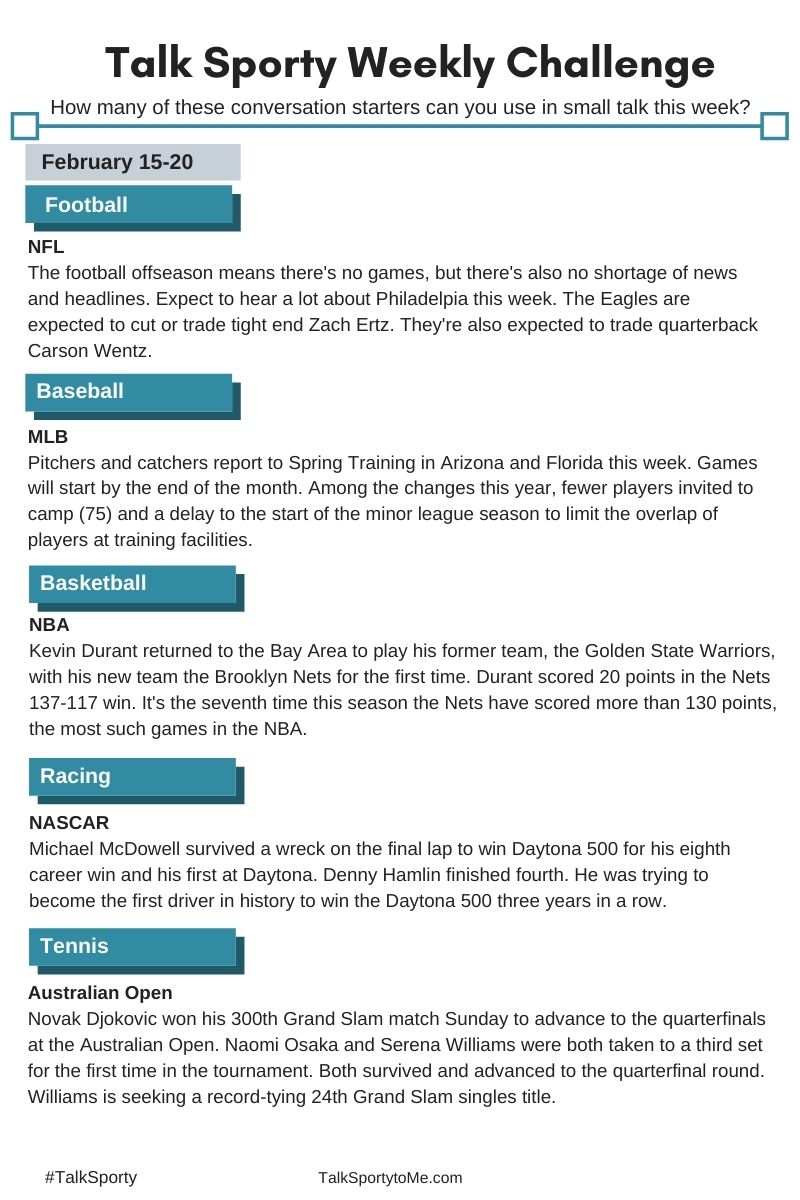
I hate goodbyes! How to end a virtual meeting
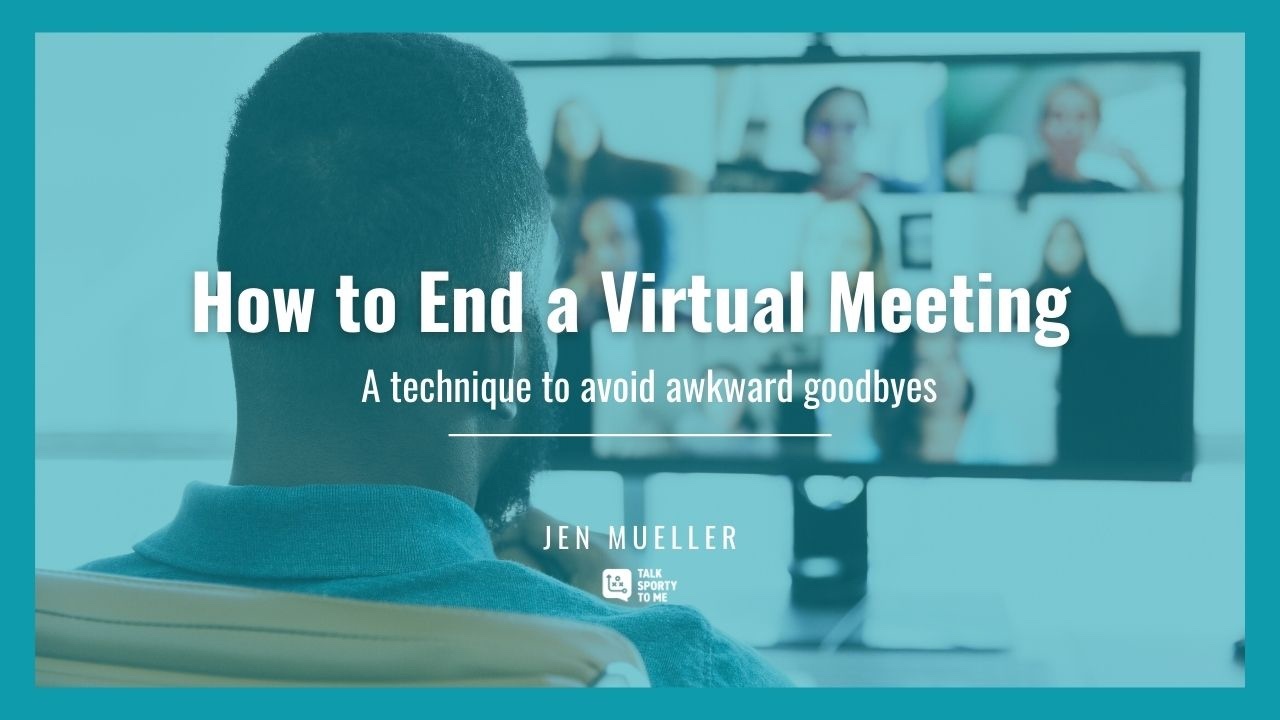
You’ve wrapped up the conversation. You’re done. You’re ready to move on. But you can’t because you haven’t said goodbye. Or maybe you have… to every single person on the virtual call, and a dozen goodbyes later you’re still talking and trying to end the meeting.
You think back to the good ol’ days when you could just stand up and leave the room or announce that you needed to get back to your desk. Then you sigh and wonder how much longer the goodbyes will last and how much more awkward things will get.
These days ending a conversation could be the most challenging part of starting one.
I get it.
As a sports reporter who does live post-game interviews I’ve dealt with this dynamic for about 15 years. I don’t have to tell you the most awkward part of saying goodbye is having to do it a second time.
I know from personal experience you can’t just end an interview or a conversation with “Goodbye and thank you...
Managing Up When Working From Home
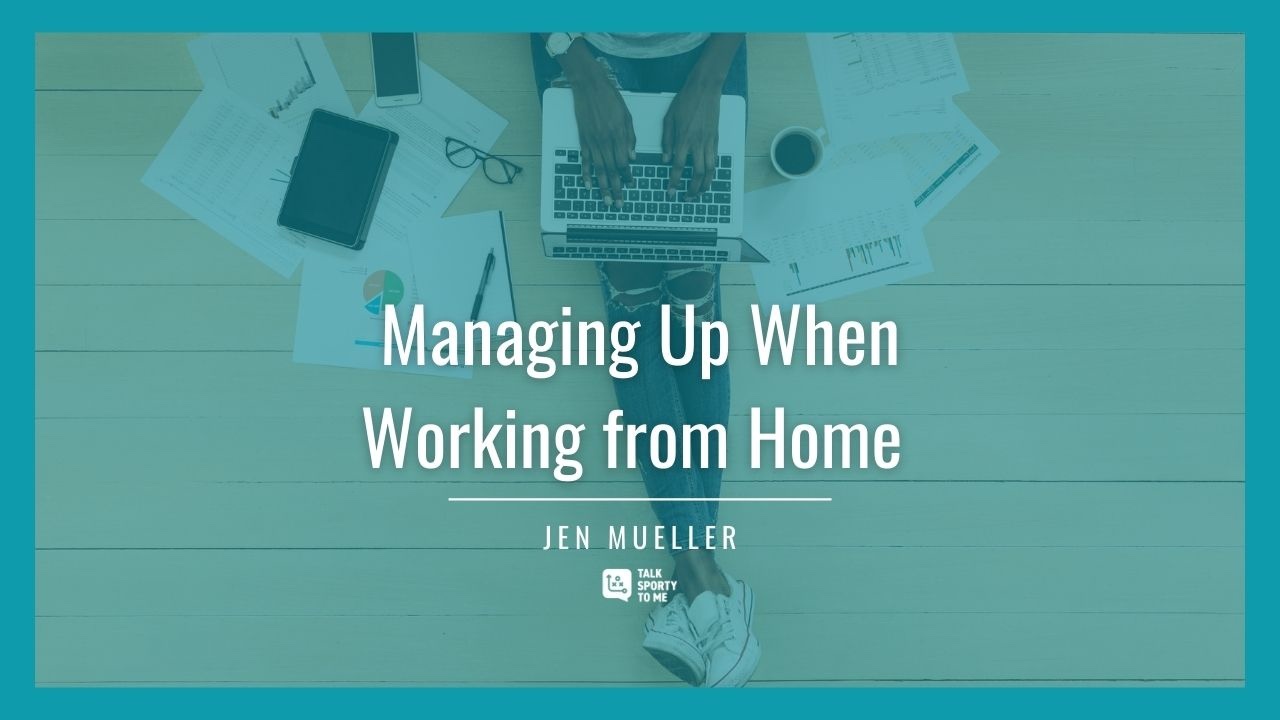
The freedom and options that come from working from home highlight the benefits of the current business environment.
The downside? There’s less contact, connection and interaction with managers and that can make it difficult to clear up misunderstands and maintain positive relationships.
For example, you can’t walk past their office to see if it’s good time to talk, and there are no organic social interactions in a hallway or elevator that might smooth over what felt like a brusque email or exchange. Plus, a lack of physical cues makes it harder, if not impossible, to gauge reactions and read the room.
Managing up requires different skills in a work from home environment.
Building, maintaining and growing those relationships comes down to clear, concise communication. These five conversation strategies will help.
5 Communication Skills for Managing Up While Working from Home
Distinguish information from “bad news.” Resist...
Asking Better Questions – A Skill for Thought Leaders

Effective leaders know who they’re leading. Not just the names of the people reporting to them, but the actual people.
That’s a challenge in any environment because there will always be people who keep things close to the vest, others harbor a distrust of management or leadership, still others aren’t effective communicators putting great onus on leaders to draw out information needed to build good relationships.
The current work from home environment adds another layer to that relationship building process and highlights the importance of Asking Better Questions.
It’s a topic I discussed as part of Thought Leadership presentation during a webinar hosted by Mary Alice Colvin Co-Lead of the Washington chapter of WIT
If you want to be a thought leader who affects change and innovation you need to upgrade the questions you’re already asking in order to guide conversations that resonate with the people you lead.
Here are a few more...
Successful Resolutions Aren't Made in January

Everything starts over in January. The year, your earnings statements, health care benefits, and often your resolve at making big improvements. It makes sense. A brand new calendar, not just a new page in the calendar, feels like a clean slate and a very definitive time to commit to new habits, goals and resolutions.
Except it might not be right the right time for you.
It certainly isn’t for the Seahawks players I cover. There’s time for resolutions, new habits and goals in the offseason, but not now.
After 20 years in locker rooms as a sports broadcaster and sideline reporter I’ve learned not to make New Year’s resolutions because the most successful people I know (the athletes I cover) don’t for two very good reasons.
- Your busy season isn’t the time to develop a new skill (or add more to your plate.) Maybe January is a slow month for you, maybe things don’t pick up until March or June. If that’s the case, go ahead and learn a...
Let's Talk About Those Big 2021 Plans
Happy New Year! I bet you have big plans for 2021, but do you have a way to share those plans? What about the accomplishment you’re most proud of from 2020? Do you have a way to communicate that?
If you don’t, it’s time to revisit Success Statements a topic I’ve written, posted and talked about for several years. A Success Statement is a strategic answer to the question, “How are you?”
I bet most of the time your answer would be, “Fine.” “Good.” Or maybe even, “Great!” There’s nothing wrong with any of those responses, but if that’s all you say, it’s a missed opportunity if that’s all you say.
The answer to that question directs the rest of the conversation – however long or short the interaction is. It’s your chance to highlight the fact that you’re excited to tackle a new project, or that you’re working on a stretch goal, building a new habit or proud of...
5 Things to Include in Compelling Virtual Presentations
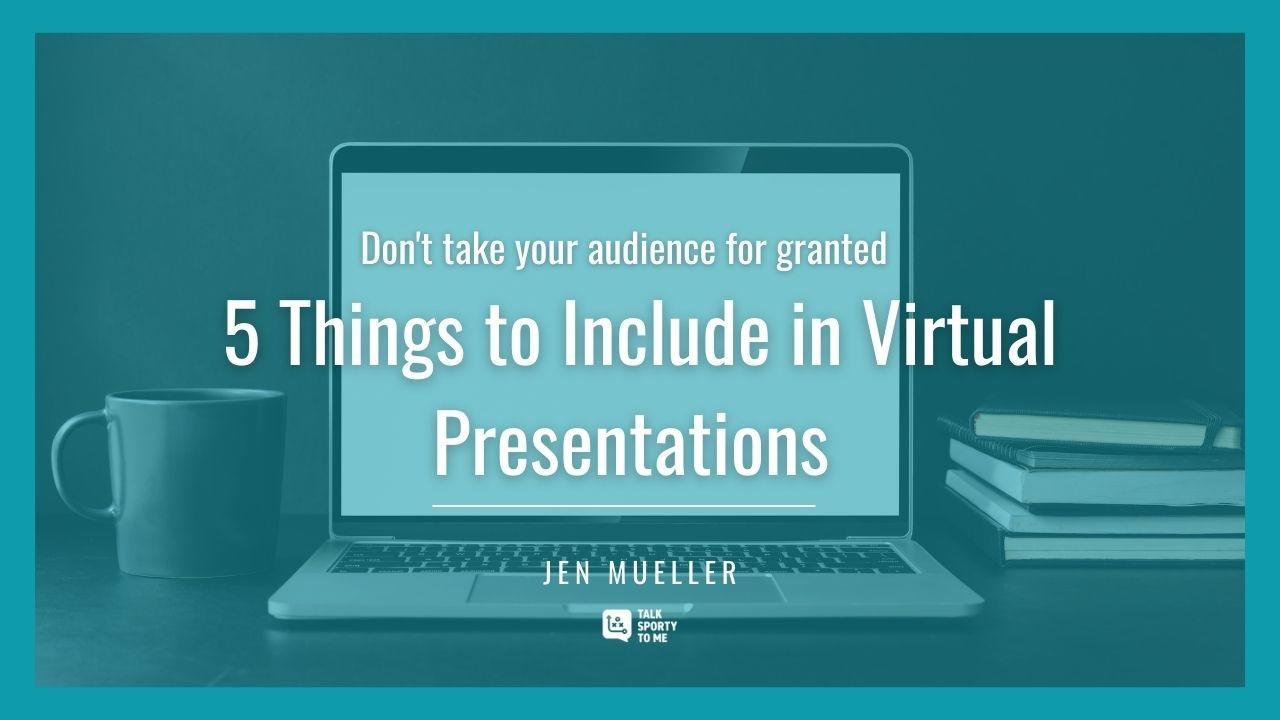
Attendance doesn't equal attentiveness.
Surely it's something you've realized in the current work from home environment. Logging into meetings doesn't mean you're paying attention. In fact, I bet you've figured how out to multi-task even when you're required to turn your camera on.
Don't take your audience for granted and assume they're paying attention just because they're in attendance. Even when your audience (i.e. your team, manager, or clients) is motivated to listen it's easy to get distracted in a virtual environment. Make it easier to focus by delivering in your message in a compelling way.
5 Things to Include in a Compelling Virtual Presentations
Intentional pauses. Stop yourself from talking too much by adding pacing mechanisms to your presentations. That includes intentional pauses, full stops for audience engagement and varying the tempo at which you deliver the content. Pacing mechanisms allow your audience to catch up and process what you’re...
Sports Conversation Starters for Your Workweek
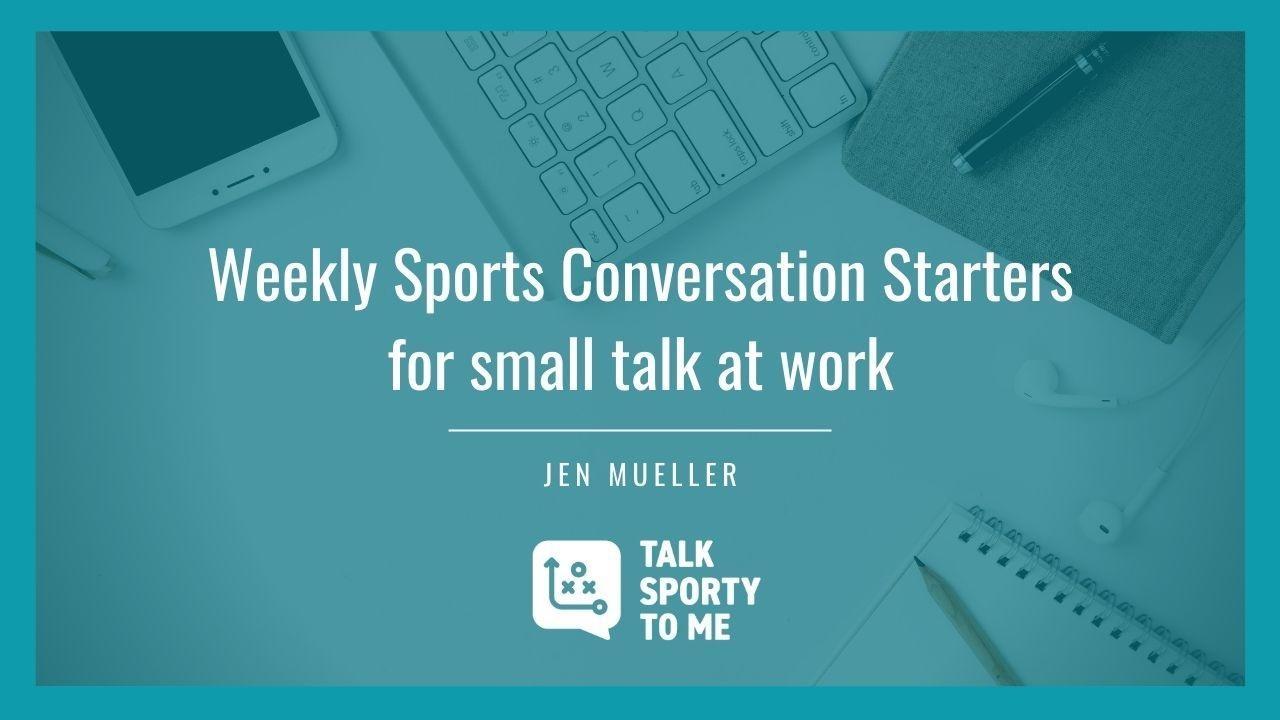
Happy holiday week! With any luck you’ll have fewer reasons to log onto virtual meetings this week, but that doesn’t mean your conversations should stop all together. In fact, this is a great week to focus on more personal interactions that are outside the scope of business conversations.
Here are a few options for starting those conversations:
“Good morning! What are you most looking forward to today?”
“Your name came up in a conversation last week and it reminded me to reach out.”
“I’m watching __(insert show here)__ right now and the __ (character)__ reminds me of you.”
Or you can use these sports topics.



